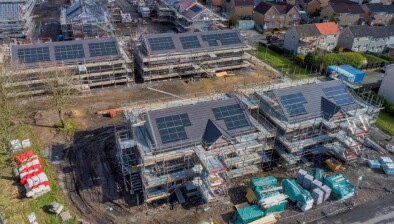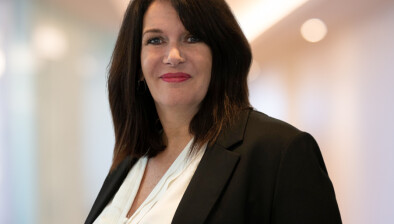Rachel Munro: Unlocking the potential of heat networks for Scotland’s living sector

Rachel Munro
Ahead of a panel discussion event next week, Rachel Munro, examines why for housebuilders, planners and local authorities, heat networks promise to increasingly be a hot topic in the months and years to come.
Heat networks in Scotland
It need not be overstated that Scotland doesn’t have the best weather and despite high energy prices, the arrival of autumn will see many people begin utilising their household gas boiler.
However, the days of gas-powered central heating boilers forming the fabric of a home are numbered.
The Building (Scotland) Amendment Regulations 2023 will mean that from April 2024, the installation of a gas-powered boiler will be effectively banned within any new homes built in Scotland. If heat network technology – being the supply of heat from a central source (often known as an energy hub) through a network of underground pipes – is to act as solution to domestic heating, it’s vital that the real estate industry has clarity on how the costs of installation and maintenance of this technology will be managed. In addition, there’s the need to establish a legal agreement among all interested parties about how it can be regulated.
1.5 per cent of Scotland’s heat is currently provided from a heat network. The Scottish Government aims to increase this figure to eight per cent by 2030. There are currently an estimated 1,080 heat network schemes in Scotland and the Scottish government is pledging £300m of funding to incentivise the use and inclusion of these networks within Scotland’s development landscape.
For example, the proposed heat network scheme being implemented by Vattenfall at Shawfair in Midlothian to the south-east of Edinburgh is benefitting from up to £7.3m from the Scottish government’s Low Carbon Infrastructure Transformation Project.
The Shawfair District Heating Network is one of the most publicised schemes currently in Scotland’s housebuilding sector. This may be partly attributed to the fact that the Shawfair development could see the creation of a whole new Shawfair Town, comprised of circa 3,000 new homes.
As Vattenfall has highlighted, it’s significant too that the CO2 saving - as a result of this network - will be the equivalent of taking 1,200 cars off the road - a saving of over 2,500 tonnes of CO2 per year.
With the industry already breaking ground to install heat network technology and miles of pipes at various development sites in Scotland, attention must turn to its necessary regulatory landscape.
Regulation
The Heat Networks (Scotland) Act 2021 was a key piece of the puzzle for catalysing the growth of heat networks in Scotland. This introduced powers to regulate the heat networks market.
There does still, however, need to be collaboration between the heat network sector, real estate businesses and local authorities to develop a sensible and effective layer of secondary legislation, which is being phased in over the next couple of years.
At present, there is no regulation yet in force requiring a heat network contractor to hold a licence or permit to operate. That’s surely a crucial factor to achieving buy-in from not only the housebuilding sector but also customers. This is compounded by the fact that the 2023 Regulations will require all new buildings to implement a zero direct emissions heating system. Consequently, from 1 April 2024, any developer that applies for a building warrant must ensure that these zero-emission systems are incorporated into the development plans from day one.
Danish model
As Scotland’s living sector navigates the heat network landscape, there’s a temptation to look across the North Sea to the heat network systems implemented by the likes of Denmark.
Denmark’s capital city of Copenhagen boasts the world’s largest district heating network. It serves over 98 per cent of Copenhagen’s buildings and provides heat to over 500,000 people. Some policymakers may point to the successful Danish model as one to influence how Scotland shapes its heat networks.
Adopting a similar system to Denmark is not without its challenges, however.
While it may be easier to implement heat networks in Scotland when starting on new build sites, the housing stock within Scotland’s largest city – Glasgow – presents a particular hurdle, with 73% of its housing stock categorised as multi-occupancy. Clyde Gateway’s Dalmarnock site is demonstrating that heat networks can be effectively established in Greater Glasgow, but how do developers and local authorities create effective heat networks in Glasgow’s many 18th-19thC tenement buildings?
This is certainly a challenge that the industry must overcome if the sector is to help reduce the current statistic of 32% of Scotland’s emissions being attributable to the heating of buildings. These same tenements are already posting issues in terms of complying with the current building regulations.
The conundrum facing Scotland’s cities and towns is whether a tenement can individually be retrofitted with a heat network or, rather, if retrofitting and transforming an entire street or town’s heating infrastructure is a more viable option. A scenario that will likely come down to cost.
Overcoming challenges
In advance of the panel discussion, Shoosmiths has spoken to various housebuilders to canvas their opinions and concerns. The key challenges many are facing when planning for and meeting the new regulations are: consumer uncertainty, the cost and shortage of skilled workers and practicality.
The aim of the session on the 27 September is to facilitate the sharing of industry experience of heat networks. This is critical to working towards a position where developers can implement zero-emission solutions in residential developments that are viable, appeal to customers and will be compliant with Scotland’s current and future regulations. You can register here.
![]()
Rachel Munro is a real estate senior associate at Shoosmiths









